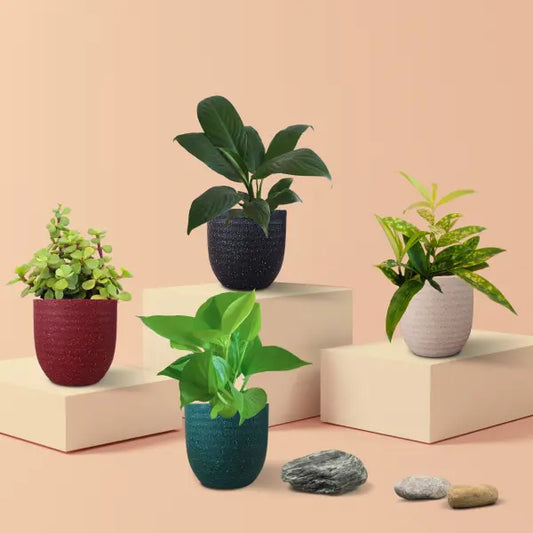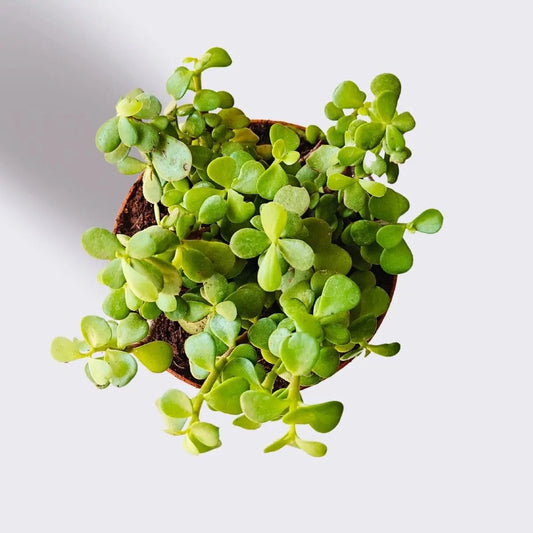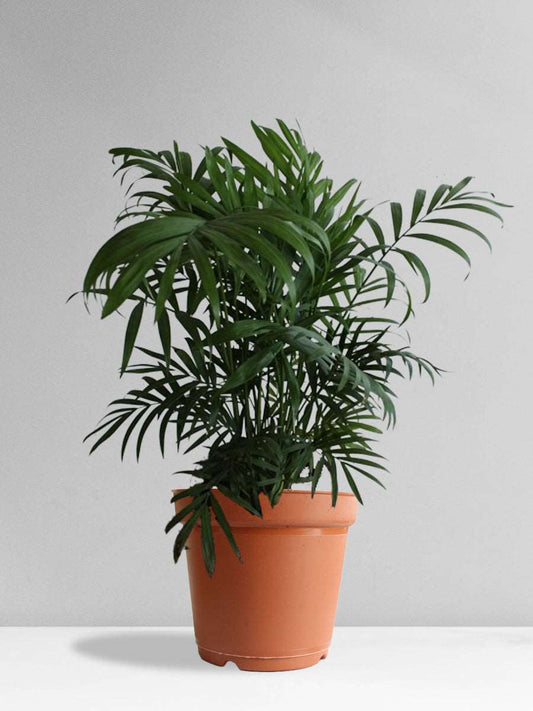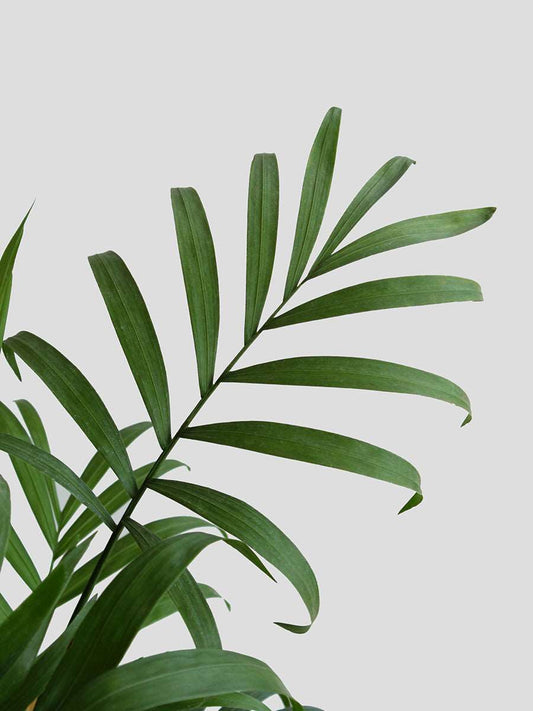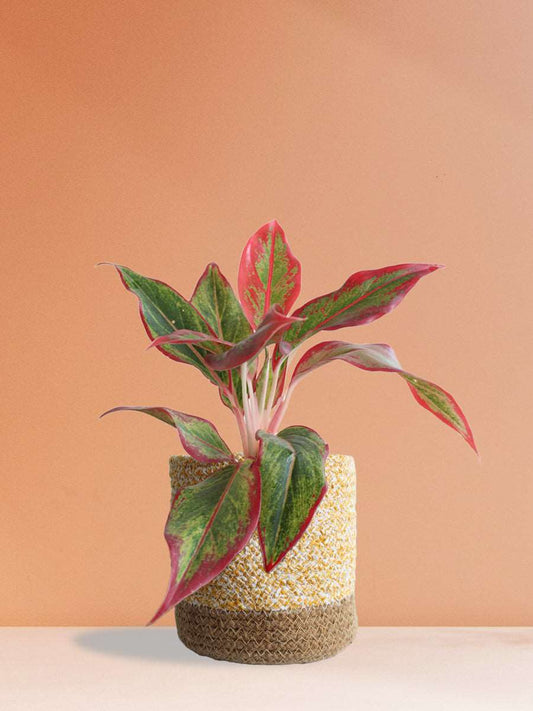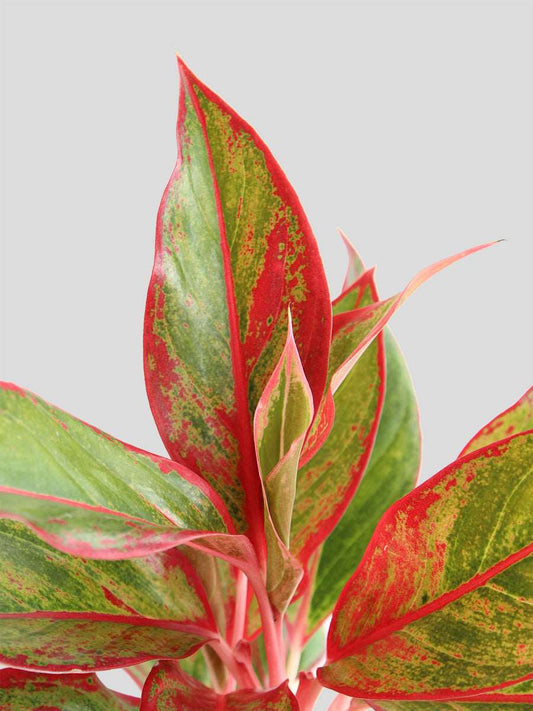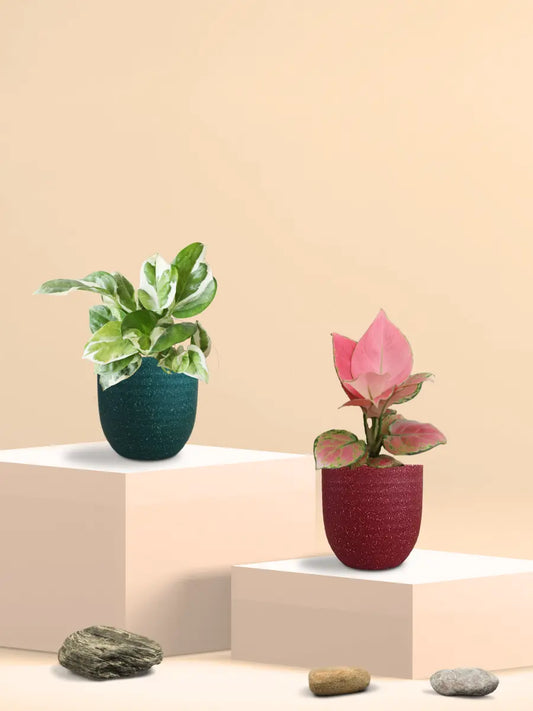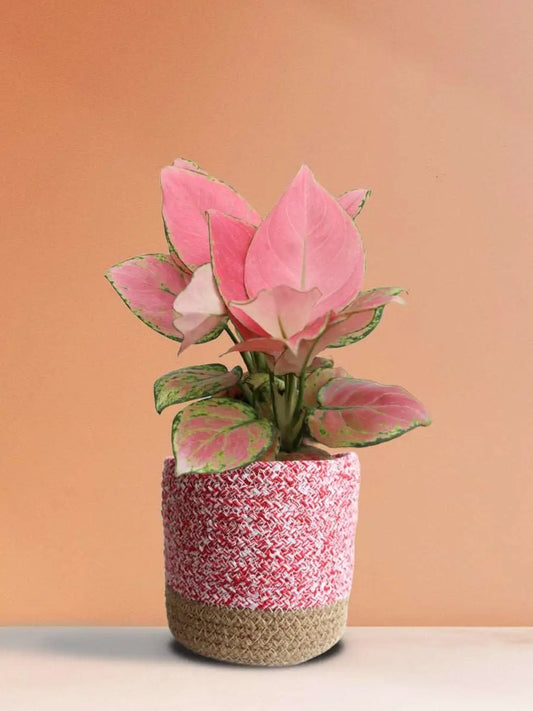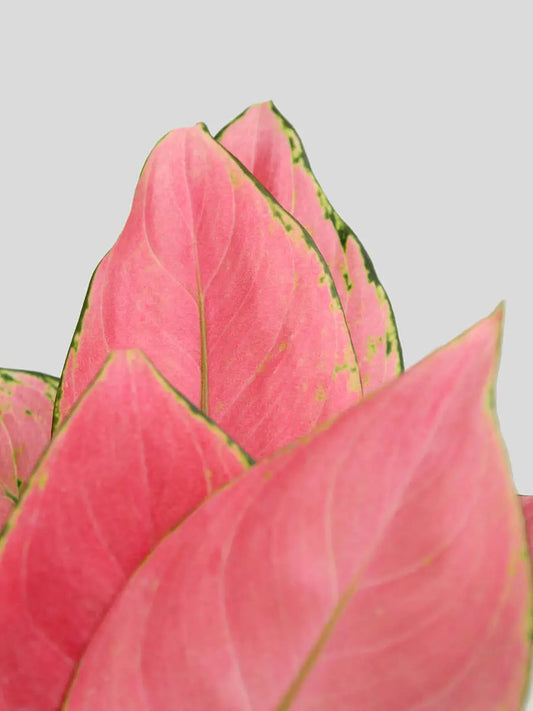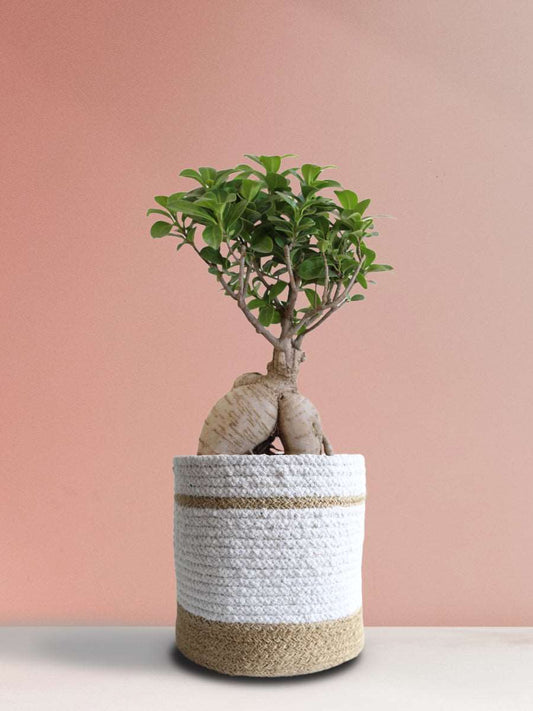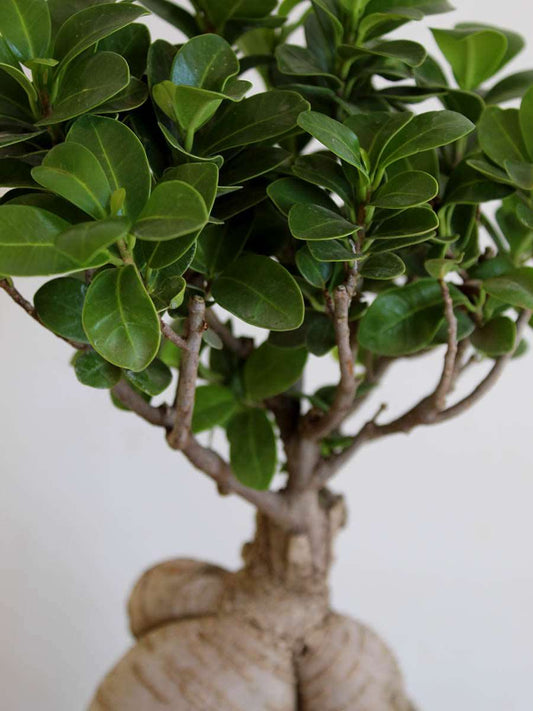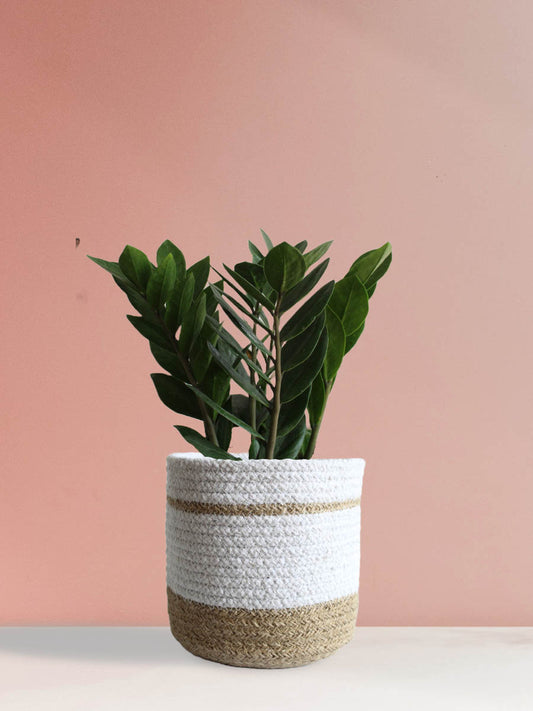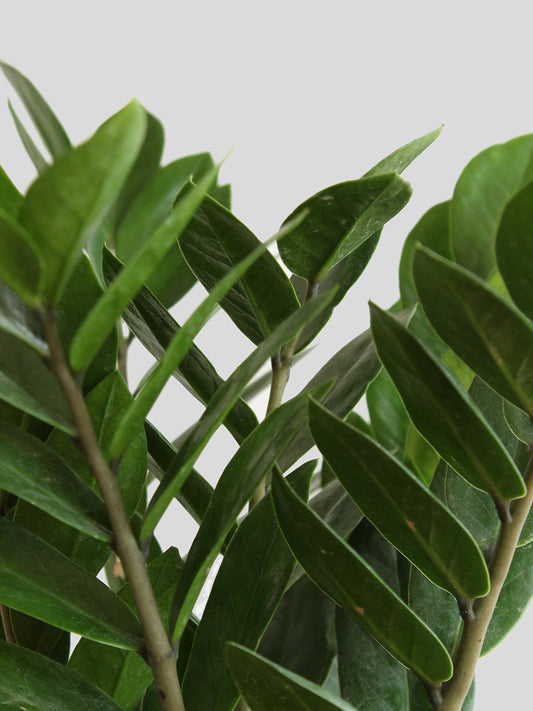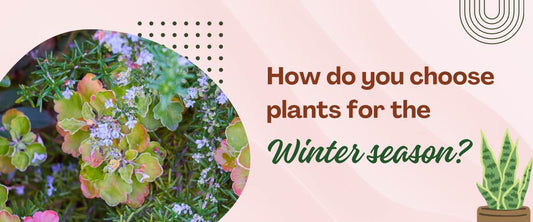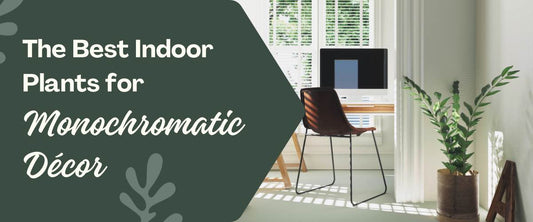Different Bonsai Trees
Have you ever heard of the Zen art form known as bonsai trees? Bonsai trees are really attractive houseplants. It is also an art to recreate some of nature's stunning views. It conveys the essence of nature in the shape of a single pot. Each tree is a one-of-a-kind natural sculpture with unique shapes and styles. Additionally, Bonsai has an interesting life cycle. That tree looks like a dream—a tiny tree—only after years of cultivation and care. Amazing! Let's find out more about bonsai plants, their many types, and the nine common species.
Introduction Bonsai trees
Bonsai is an old art form that is native to Asia, mostly China and Japan. Bonsai is a term used to describe a potted tree or shrub that artistically follows natural features through pruning and shaping. The terms "bonsai" are derived from the Chinese words for "bon" and "sai." The term “bon” means a tray-like pot or dish, and “sai” means planting or growing. Some may refer to bonsai as a "little tree," although it is not a baby tree. However, it's a dwarf tree grown to appear relatively small.
Also Check This: Picking Up The Right Spots For Placing Plants
Different types of bonsai trees
There are many different styles and types of bonsai trees. Each bonsai is unique and needs individual care. Each bonsai style has particular tree and root styling and cutting guidelines. Each bonsai has its own ideal shape and aesthetic design.
The different styles of bonsai trees are:
- Formal Upright-Type Bonsai Style
- Informal, Upright Bonsai Style
- Shaken Bonsai Style
- Cascade Bonsai Style
- Raft Bonsai Style
- Literati Bonsai Style
- Other Bonsai Style Types
1. Formal Upright-Type Bonsai Style:
Formal upright-type is a popular bonsai style. This style type aims to build the straightest bonsai tree with comparable-sized branch whorls that diminish in size up the trunk. This is the bonsai tree style that best shows the primary decision of how the bonsai tree should look.
2. Informal, Upright Bonsai Style:
Another common design is the informal upright style. This form has a straight trunk with a tiny curve or bend that makes it appear more natural.
3. Shaken Bonsai Style:
The tree trunk's slant makes it clear that it is in the shaken style. The trunk's angle can range from straight to 45 degrees.
4. Cascade Bonsai Style:
In semi-cascade (han-kengai) and complete cascade (kengai) forms, the trunk falls downward from the rim of the pot, usually not reaching the peak of the tree.
5. Raft Bonsai Style:
Raft (ikadabuki) style is when a tree is trained to grow horizontally along the ground, mimicking a naturally fallen tree or driftwood on the ground.
6. Literati Bonsai Style:
Literate style has an attractive appearance. It is tall and slender, with scant foliage that appears to be blown away by the wind. All of the branches curve toward the stem.
7. Other Bonsai Style Types:
Other less known bonsai styles are windswept (Fukinagashi), weeping (Shidare), split-trunk (Kabudachi), and driftwood (Nagare-gi).
The different and diverse types of bonsai trees are:
- Conifer/Sho-Haku Bonsai Tree
- Broachleaf (Zo-ki bonsai) Trees
- Hana-mono bonsai (flowering) tree
- Mi-Momo Bonsai (fruit) Tree
- Herbaceous Bonsai Trees
1. Conifer/Sho-Haku Bonsai Tree:
This type of Bonsai has an evergreen conifer, such as a pine or a Japanese oak. This Bonsai is highly valued because of the wither resistance and long life of the evergreen. There are approximately 110 different types of coniferous, but each is very different.
2. Broachleaf (Zo-ki bonsai) Trees:
Broachleaf (Zo-ki bonsai) trees are often deciduous or evergreen in the broadleaf tree family. They are considered to be a bit more challenging to cultivate than conifers. But they are well worth the effort if you want more of a four-season feel.
3. Hana-mono bonsai (flowering) tree:
The Hana-Mono bonsai is famous for its flowers. Camellias, cherries, and plums are good examples of Hana-Mono bonsai. These bonsai plants' vivid colors and relaxing smells create a warm and welcoming atmosphere in their surroundings.
4. Mi-Momo Bonsai (fruit) Tree:
The fruit plants (mi-mono bonsai) are a popular bonsai known for growing fruit. The plants that produce fruit are the Japanese winterberry and persimmon trees. The fruit on the trees represents both the vitality of the tree and the beauty of the bonsai.
5. Herbaceous Bonsai Trees:
Han-Kengai. Bonsai trees are cultivated with small herbaceous plants or flowers such as saxifrage, fortunella, violet, and others. Herbaceous is popular among gardeners since it requires little maintenance and has a seasonal beauty.
9 Common Species of Bonsai Tree
Explore nine common species of bonsai trees. Each bonsai tree has unique features.
- Ficus Bonsai Ginseng Tree
- Elm Bonsai Trees
- Cherry Bonsai Tree
- Japanese Maple Bonsai Tree
- Oaktree bonsai
- Serissa Bonsai Tree
- Cypress Bonsai trees
- Jade Bonsai Trees
- Pine Tree Bonsai
1. Ficus Bonsai Ginseng Tree:

Ficus bonsai ginseng is a unique and popular type of indoor evergreen bonsai tree. It has deep green, waxy leaves and strong, trunk-like stems. It is easy to care for a bonsai tree. It has a unique bonsai style. Ficus bonsai's compact stature makes it an excellent accent plant for a study or coffee table. Also, it is an auspicious gift and a good way to begin the art of Japanese bonsai.
Also Check This: Budget Friendly Plant Decor Ideas at Home
2. Elm Bonsai Trees:

The Chinese elm bonsai tree is native to southeast Asia. This tree is admired for its exquisite ramification, small leaves, and lovely bark that make it a wonderful bonsai. Due to its durability, beginners love this bonsai tree. It trims effectively and can be stored both indoors and outdoors.
3. Cherry Bonsai Tree:

Cherry bonsai trees are popular among bonsai and home gardeners for their beautiful pink blossoms and delicate foliage. Most of the time, you can find the Japanese flowering cherry in a bonsai pot. This tree does well when pruned and groomed. Cherry bonsai trees are planted in early spring, giving them a full growing season to adjust to their pots. However, its leaves, stems, and seeds are harmful to humans and pets.
4. Japanese Maple Bonsai Tree:

Japanese Maple Bonsai, also known as Acer palmatum, belongs to the Sapindaceae, or soap tree family. It is native to China, Japan, and Korea. It has a long, straight trunk. Also, it is famous for its leaf shape and seasonal changes. It is a low-maintenance bonsai tree. Also, the tree's cascading aspect is easy to maintain.
5. Oaktree Bonsai Tree:

The oak bonsai tree is a miniature version of the oak tree. Oak trees are popular for their beauty, durability, and longevity. Their little leaves and intriguing bark make them good bonsai trees. Interestingly, the tree's bark is both rough and grayish brown in color. Many of these trees change colors in the autumn. Some oak bonsais may even produce mini-acorns.
6. Serissa Bonsai Tree:

The Serissa bonsai tree is famous for its beautiful flowers. It's also known as the Snow Rose. It is recognized for its beautiful white blooms, which bloom 365 days a year. "Snow Rose" Serissa, Japanese White Serissa (Tree of a Thousand Stars), Japanese Pink Serissa, Chinese Serissa, and Variegated Serissa are just a few of the many types of serissa bonsai. The subtropical nature of Serissa bonsai makes them perfect for growing indoors.
7. Cypress Bonsai Tree:

The cypress bonsai tree is an elegant example of the bonsai aesthetic and a popular bonsai tree. It is a masterpiece of bonsai and design, achieving balance and harmony. Its simple design and delicate branch orientation make it a living sculpture. Two of the most popular types of cypress trees for bonsai gardening are the Bald Cypress and the Japanese Hinoki Cypress. These types have evergreen, pointy, triangular leaves that are glossy and soft. It is a good bonsai tree option for decks and patios.
8. Jade Bonsai Trees:

The Jade Bonsai tree, often called Dwarf Jade, has succulent leaves and branches that turn scarlet and brown over time. Jade Bonsai is unique due to its leaves. It's compact and rounded, perfect for a small bonsai tree. This is also simple to keep indoors and outdoors.
9. Pine Tree Bonsai:

Pine bonsai is generally seen as one of the more advanced bonsai varieties. These are not recommended for beginners in most cases. Because different climates can have a significant impact on the needs of the tree, they can be one of the most challenging bonsai types to wire, style, and prune. Popular pine bonsai trees include Japanese black pine and red pine.
Also Check This: Ceramic Vs Terracotta Pots Best For Your Plants
Conclusion
Bonsai trees are a magnificent combination of art and horticulture. They are transformed from miniature versions of full-grown trees. Over time, many different types of bonsai trees have been designed, each with a unique, striking bark and fabulous green or vibrant spotless foliage. Some of the most common bonsai tree types are Ficus Ginseng, Elm, Cherry, Japanese Maple, Oak, Serissa, Cypress, Pine, and Jade.


